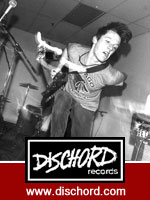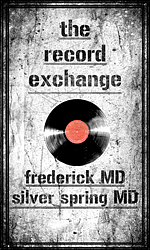 A snow mine is a mine full of snow—if you fell in you might not make it out—which is why I would rather fall into the songs of Snowmine, the Brooklyn-based five-piece. The very kind band mates, Grayson, Alex, Jay, Calvin, and Austin, gave us some time to take over a corner of the Red Palace before their show on November 8th.
A snow mine is a mine full of snow—if you fell in you might not make it out—which is why I would rather fall into the songs of Snowmine, the Brooklyn-based five-piece. The very kind band mates, Grayson, Alex, Jay, Calvin, and Austin, gave us some time to take over a corner of the Red Palace before their show on November 8th.
Four of the five band members attended NYU as music majors, and DC native Austin majored in music technology and sound design. Together they are Snowmine. Their latest album, Laminate Pet Animal, is a mix of musical intelligence and curiosity as captivating as their live show, and an experience in color and smart arrangements. I didn’t know much about the band before last Thursday, but I left completely immersed in Snowmine.
Where are you guys originally from?
Grayson: Originally, everyone is from a different part of the country: Calvin is from Connecticut, Jay from New York, Alex from Philadelphia, Grayson from the South, California, and the East coast, and Austin is from DC. The four of us [Grayson, Alex, Jay, and Calvin] attended NYU and stayed after college, while Austin made the move from DC to Brooklyn.
DC endures many musicians who leave for Brooklyn—Austin pointed out leaving for Brooklyn is what he felt needed to happen for his career. How do you see yourselves in the Brooklyn music scene?
Grayson: I think things have started to take a turn in New York. Three or four years ago, there was a really strong sense of family in the Brooklyn scene, and it definitely started come to the forefront of musical experimentation in the US. Recently, I think we’ve all sensed some sort of stigma attached to the idea of Brooklyn when we travel. Mostly, we are kinda doing our own thing now. The sound there was definitely pretty homogenized for a while, and everything started to blur together, but now people are stepping out and challenging what became the norm.
Do you feel that it is a good place for meeting other musicians?
Grayson: Oh yeah. New York always has been and always will be, because it’s one the cultural hubs of the world. But most musicians can’t afford to live in the city, so gentrification forces them into outlying areas.
How do musicians make it work living in such an expensive city?
Jay: There are different tactics… many different people cramming into one small place, moving into places that probably shouldn’t be living spaces… Even our practice space has people living in it… and I definitely don’t think that’s a good idea. (Laughs)
There are so many bands—especially in Brooklyn—how do go about comparing yourself to everybody else? Do you?
Grayson: If it works, it works, and the world will tell you that.
Alex: If you treat your work right, it will treat you right back. The more you put into it, the more you get back. It may not necessarily come back in money—it just depends what your goals are—but when you put your energy into something, it will find its way. It’s your life.
Are there any DC bands that you guys have heard that you like?
Austin: Well, the band opening tonight, Young Rapids, sounded great at sound check.
Calvin: There’s a band called Deleted Scenes from around here that I really like, too.
You have a side project called Shape Massive that created COLORBEAST, an interactive video portrait creator. Can you talk about that?
Grayson: In the Fall of 2010, Jay and I got involved in interactive media—a good friend of ours was working with a program called Max MSP, a program-building program that allows you to control a range of different devices… video, audio… even robots. The stuff he was doing visually was amazing, but it was really complicated. We thought we might be able to apply that to something that anyone could use with their fingertips. It took a couple of years, but now it’s actually alive! Our good friend Leia is doing the live visual work for us on tour.
Anyone who catches a Snowmine show will be able to see COLORBEAST at work; it’s nice to see a physical process to music. Snowmine puts a lot more into the show visually than most musicians in your genre—creating a process is a major element of your show, which I think makes it really special. Part of that element is using found objects, not only for your visuals but also as instruments. Can you talk more about how you use found objects?
Grayson: We all share a passion for jazz and classical. At the time when that was my main focus, I was spending most of my free time with people that were doing very weird and exciting things, pushing the envelope with sound. I was really inspired by John Cage and Harry Partch, who worked outside the melodic realm, not just for percussive purposes, but also to create micro melodies and harmonies out of everyday objects.
For us particularly, it’s about trying to place the sounds into pop songs, which can be a bit more challenging, as it becomes about picking and choosing the ones that aren’t distracting but at the same time add a bit of intrigue and don’t seem completely irrelevant.
Grayson, you have a classical background. What made you get away from that and go toward more rock and pop music?
Grayson: It’s still a big part of my life in my free time, whatever that is… (Laughs) I think I had the realization at one point when I was at a random show two years ago. I’d spent so much time working around people who were very focused only on the small and finite details—very academic, and it judges only itself. It can become very self-conscious. You can self-validate and validate the people you are working with, but in the end I saw brilliant musicians night after night performing for ten people… and five of those were their peers. I think learning how to apply those experiences and that vocabulary to other music and moving it around in another sphere is a really good thing to take from it.
Let’s talk about vinyl—how is vinyl a part of your life and your music?
Calvin: I appreciate vinyl as an artifact. I find myself buying vinyl more than digital, but that being said, I haven’t made the investment in buying a record player.
If you are going to have something tangible, it should be beautiful and full of intention as the artist intended. It’s in your face, it’s not in some jewel case.
 Calvin: Guitar, Keyboard, Vocals and Percussion
Calvin: Guitar, Keyboard, Vocals and Percussion
Live shots from Washington, DC’s Red Palace, November 8th.
Portrait photos at the Red Palace: Joy Asico
Live photos: Julia Lofstrand



































